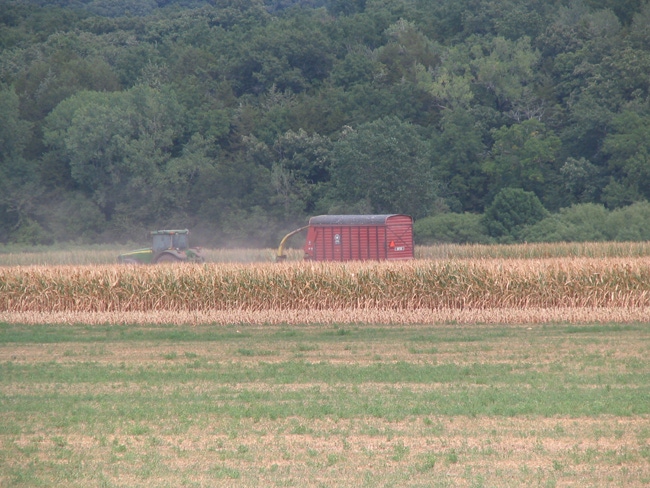July 26, 2012

Water shortages are critical at any time of plant development but especially at the reproductive stage. They will lead to poorer crop performance and less yield potential, says Mark Rosenberg, SDSU Extension Weeds Field Specialist.
Rosenberg explains that each crop has a different period of growth where adequate moisture will be necessary to reproduce. Corn to a degree can be fairly drought tolerant. However, the critical time for moisture to be present is during the period 2 weeks before and after tasseling.
"The first sign of moisture stress in corn is when leaf tissue wilts and rolls during the warmer parts of the day. Normally the plant will return to its normal vigor once the day cools off. As dry weather persists and intensifies the corn will not be able to draw sufficient water and will remained stressed both night and day. If the conditions persist for extended periods of time the leaf tissue will begin to die," Rosenberg said. "The first signs of death begin at the leaf tips and margins. This will progress to cover more leaf surface as available moisture decreases. The point at which the plant will not recover is called the permanent wilting point."
Research has shown that four consecutive days of visible wilting can reduce yields by 5 to 10%. Also the rows of kernels (V6 to V8) and the length of the ear (V10 to V12) are determined prior to tasseling.
"If stress occurs in those periods of time the ear will not increase even if rain is received," he said.
Rosenberg adds that drought at the early stages of reproduction (silking and tasseling) can cause severe yield reductions. Some estimates suggest possible losses approaching 50% when the plant is short of moisture. Poor pollination will result in poor kernel development and unfilled ears, usually at the tip.
To gain a better idea of how successful the pollination period was this season, Rosenberg explains an in-field test growers can conduct.
"Once pollination has stopped, there is a three day window to walk the field and check random spots. Carefully detach the ear and remove the husk. Then give the exposed ear a shake and observe the silks. If they properly pollinated the ovules (immature kernels) they will drop from the ear. The higher number of silks shedding indicates successful pollination," Rosenberg said.
Rosenberg shares another observation growers can make when deciding grain potential.
"Look for ovule development about ten to 14 days after pollination. Look for small water-filled blisters emerging on the cob. These will develop into kernel as the season progresses and moisture is available," he said. "The yield potential shortly after pollination has completed will correspond closely to the success of pollination. If pollination success was low, rainfall after the pollination window will not increase yield potential. If yield potential is highly limited, salvaging the crop as forage should be considered."
You May Also Like




